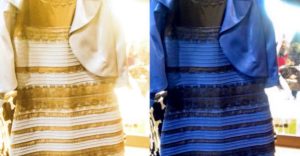In a previous blog piece, Jake Buckler tried to tell you that bias lighting is a good idea. He’s not wrong, but he didn’t really get into the why of it. Let’s do a little deeper dive into the color science involved.
Yes there is one right way (or is there)
If you listen to manufacturers, there is one right way to watch your television. They will tell you that all television watching should take place with televisions calibrated to SMPTE standards for brightness, color and contrast. You can download test patterns to display on your TV if you want to help you with that.
I’ve said for years that it’s your TV and if it looks good to you then fine. For most folks, the best thing to so is take the TV off “Vivid” mode — they are all set that way so they look good in the store — and put it on “Standard” mode. If your TV is working right, this should be pretty close to a calibrated standard already.
Wherever you go, there you are
A properly calibrated TV is only half the battle, though. You should watch your TV in a “reference environment.” That means there should be no glare on the screen. It also means the room is properly lit with just enough of the right color light, plus the right color walls and nothing that distracts your eye.
Most of us don’t watch TV in grey featureless rooms with special bulbs and diffusers in the ceiling. That’s a bit obsessive, probably. But there is a reason that manufacturers say that. The color you see depends on the color and brightness in the room you’re seeing it in.
Remember “the dress?”

The world obsessed over a single picture for one day in 2015. This random picture posted on the internet might be blue-and-black, or might it be white-and-gold? For myself, I saw it one way when I turned on the PC in a dark room and another way in a properly lit room. And that’s the point.
In a very dark room, your TV will look overly bright and washed out. In a very bright room, your TV will look dark and shadowy. Put it in a bright yellow room and everyone will look pink. Put it in a red room and everyone will look yellow.
Your eyes are supposed to work like that. They are supposed to adapt to different conditions to let you see things that stand out. If your entire life consists of trying to kill small mammals in order to survive, that’s a very useful skill. If your entire life consists of bingewatching Billions it’s not.
Bias lighting evens the score
Bias lighting puts a glow around the TV that’s just the right color to complement your TV’s calibration. The glow comes from LED lights that are stuck to the back of the TV and shine on the wall behind. Sometimes they’re powered by the TV itself and other times you have to plug them in.
Some early bias light systems changed color with the content on the screen in order to help the picture look more natural in the room. That system was ok, but it turns out that most people were a bit distracted by it. It’s better to have just one light, calibrated to match a bright sunny day, but just bright enough to work with your TV’s own brightness.
Putting in a bias light not only helps you see the TV picture the way it was intended, but can also stop headaches and eyestrain. Today’s TVs have a glossy screen that reflects EVERYTHING. This can make you squint to see fine details if the light from the room bounces onto the screen. On the other hand, watching TV in total darkness is as bad for you as your mom said and it makes everything on the screen seem much too bright. This can give you splitting headaches. Really, it’s happened to me.
A bias light gives you just enough light in the room, compensates for any weird paint colors you’ve chosen, and just gives you the best viewing experience, period.
If you’re curious about what a bias light can do for you, check this one out at Solid Signal. It’s not that expensive, connects straight to most TVs, and may just help you enjoy TV a little bit more.





